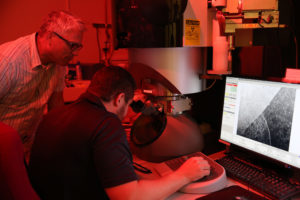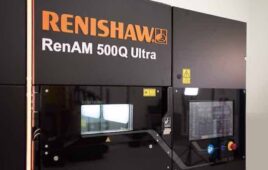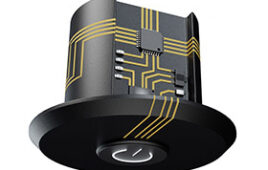“Marine grade” stainless steel handles corrosive environments and offers high ductility, thus, it is often specified for applications in oil pipelines, chemical equipment, engine parts and so on. But the typical methods used to strengthen this material often sacrifice the ductility.
Lawrence Livermore National Laboratory (LLNL) researchers, along with collaborators at Ames National Laboratory, Georgia Tech University, and Oregon State University recently reported a breakthrough in 3D printing a common form of marine grade stainless steel, a low-carbon type called 316L, that has high-strength and high ductility. The research was reported in the journal Nature Materials.
Said LLNL materials scientist and lead author Morris Wang, “We were able to 3D print real components in the lab with 316L stainless steel, and the material’s performance was actually better than those made with the traditional approach. That’s really a big jump. It makes additive manufacturing very attractive and fills a major gap.”
The ability to 3D print 316L using powder bed fusion would be useful in aerospace, automotive, and oil and gas industries.
Researchers needed to solve the issue of porosity that can happen during the additive process’s laser melting stage. Porosity describes a condition where there is incomplete melt of powder material, which leads to holes or voids in the build, which can lead to part fracture under load. The researchers used a density optimization process, computer modeling, and by manipulating the materials’ underlying microstructure.

LLNL materials scientist Joe McKeown looks on as postdoc researcher Thomas Voisin examines a sample of 3D printed stainless steel. Photos by Kate Hunts/LLNL.
“This microstructure we developed breaks the traditional strength-ductility tradeoff barrier,” Wang said. “For steel, you want to make it stronger, but you lose ductility essentially; you can’t have both. But with 3D printing, we’re able to move this boundary beyond the current tradeoff.”
Using two different laser powder bed fusion machines, researchers printed thin plates of stainless steel 316L for mechanical testing. The laser melting technique inherently resulted in hierarchical cell-like structures that could be tuned to alter the mechanical properties, researchers said.
Said LLNL scientist Alex Hamza, who oversaw production of some additively manufactured components, “When you additively manufacture 316L it creates an interesting grain structure, sort of like a stained-glass window. The grains are not very small, but the cellular structures and other defects inside the grains that are commonly seen in welding seem to be controlling the properties. This was the discovery. We didn’t set out to make something better than traditional manufacturing; it just worked out that way.”
“Deformation of metals is mainly controlled by how nanoscale defects move and interact in the microstructure,” LLNL postdoc researcher Thomas Voisin said. “Interestingly, we found that this cellular structure acts such as a filter, allowing some defects to move freely and thus provide the necessary ductility while blocking some others to provide the strength. Observing these mechanisms and understanding their complexity now allows us to think of new ways to control the mechanical properties of these 3D printed materials.”
Lawrence Livermore National Laboratory
www.llnl.gov
Filed Under: 3D printing • additive • stereolithography






Tell Us What You Think!